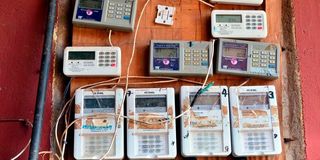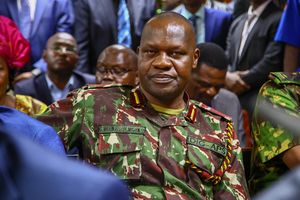Why electricity token amount has gone up but the units have reduced

A prepaid electricity token machine provided by Kenya Power at an apartment in Nairobi.
Kenyans have noticed in the past week, upon closer examination of their power bills, that they are receiving fewer units of electricity despite an increase in the token amount and a reduction in variable costs.
For instance, for Sh1,000, customers are now receiving four units less than before, despite an increase of Sh209 in the token amount and a reduction of charges by a similar amount.
This means that the number of units received for Sh1,000 has decreased from 35.81 a week ago to 31.5 units.
The token amount component of the power bill represents the portion of money that goes towards the actual energy consumed by the customer, minus taxes, levies, and other charges.
Ordinarily, customers would assume that an increase in the token amount would translate to more units.
However, the Energy and Petroleum Regulatory Authority (Epra) recently implemented new power tariffs, which became effective on April 1st.
Under the new pricing, Epra significantly increased the cost of purchasing actual power, exclusive of taxes, levies, and other charges.
Prior to this change, starting from January last year, lifeline customers had been paying a base price of Sh7.7 per unit of power, before the addition of variable costs.
When variable costs were factored in, the per-unit price for these customers often ranged from Sh18 to Sh23 per unit, depending on factors such as fuel prices, foreign exchange costs, inflation, VAT, and other costs incurred in a month.
Under the new tariffs, Epra has increased the base power price to Sh12.22 per unit, which is Sh4.52 higher than before.
Consequently, while purchasing 100 units previously resulted in a token amount of Sh770, buying the same 100 units now translates to a much higher token amount of Sh1,220, excluding variable costs.
Additionally, last week, the energy regulator lowered the fuel cost charge (FCC) element of the electricity bill to Sh3.9 per unit, which is a decrease from the Sh8.3 per unit charged the previous month.
The net effect of the increase in base power prices and the simultaneous reduction in the fuel cost element — which is the second largest power cost element — means that the proportion of the token amount has increased while the share of taxes, levies and other charges has reduced.
Moreover, because the increase in base prices varies greatly depending on the customer segment, the net change varies depending on the customer.
As a result of these changes, customers who are eligible for subsidised rates and consume less than 30 units per month have actually experienced a 4 percent reduction in their power prices during this month’s pricing cycle, while other customers have faced a substantial increase in their prices (see graph).
Epra says that these customers number about 6.4 million and thus the new tariff has enabled them to save on their electricity costs.
“Domestic lifeline customer category will realise a reduction of four per cent in the end user bills. This represents about 6.4 million customers. The small commercial 1 customer category will also realise a reduction of four per cent in their end user bills,” said Epra last month.
It went on: “These consumers will be cross-subsidised by the other consumer categories in order to protect the vulnerable members of the society,” added Epra.
The authority also increased the base prices for those customers using between 30-100 units from Sh10 to Sh16.3, an equivalent of 63 percent while those consuming more than 100 units of electricity are now paying Sh20.97 per unit, up from Sh15.8 which is an equivalent of a 32 percent jump.
The new power prices are slightly lower than what Kenya Power had submitted for review and approval in October. Kenya Power’s request would have seen electricity prices rise by up to 73 percent.
The newly approved tariffs will see Kenya Power net Sh177 billion in revenues in the current 2022/2023 financial year—some Sh18bllion lower compared to the Sh195 billion the utility firm had targeted in its application to Epra.
Based on the new tariffs, Kenya Power will net Sh184.9 billion, Sh189.6 billion, and Sh193.7 billion in revenues for the financial years 2023/23,2024/25, and 2025/26 respectively.
The new power prices are not only negatively affecting households and small businesses but also manufacturers who had opposed the new prices stating that they would sharply increase the cost of doing business.
The Kenya Association of Manufacturers (KAM) had argued that the new tariffs would see the cost of electricity for manufacturers increase by between Sh3.5 and Sh5 per unit translating to a 38 per cent cost increase, depending on their respective tariff and consumption levels.
“It is impossible for the country to be competitive as an investment destination and therefore industrialize in the absence of affordable, reliable, quality, and sustainable electricity for the manufacturing industry,” said the lobby.





